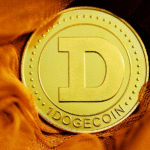
The world of finance is on the cusp of a revolution. Traditional derivatives, instruments based on underlying financial assets like stocks or bonds, have dominated the landscape for decades.
However, a new breed of derivative is emerging, poised to disrupt the status quo: Real-World Asset Derivatives (RWADs). These innovative instruments offer exposure to the value of tangible assets like real estate, commodities, or intellectual property.
With RWADs, you can manage risk or tap into markets you never thought possible! Think of it as a way to bet on the real world, just like you might bet on a sports game.
However, the world of RWADs is exciting but not without its complexities. Just like any powerful tool, trading asset derivatives requires some understanding of the underlying events and how they’re valued.
The regulations surrounding this new asset class are also still developing. But don’t let that discourage you! With the right guidance, RWADs can be a game-changer for your digital asset investment strategy.
| What are Derivatives Financial derivatives are contracts derived from underlying assets like stocks, bonds, or commodities. Their value fluctuates based on the performance of the underlying asset. Common examples include stock options, futures contracts, and interest rate swaps. These instruments allow investors to hedge risks, speculate on price movements, and leverage their positions. |

RWADs: A New Breed of Derivatives
Imagine owning a piece of the Eiffel Tower or a share in a solar farm – not physically, but through a tradable financial instrument. That’s the essence of RWADs. They bridge the gap between traditional finance (TradFi) and decentralized finance (DeFi) by creating derivative contracts derived from the value of real-world assets.
Unlike traditional derivatives, which are often abstract and disconnected from the physical world, RWADs offer a direct link to tangible assets, potentially leading to a more stable and diversified investment landscape.
Building the RWAD Ecosystem: Infrastructure for a New Era
Tokenization: Real-world assets undergo a process of tokenization, transforming them into digital representations tradable on blockchain platforms. This allows for fractional ownership, unlocking liquidity for traditionally illiquid assets like real estate.
Exchanges: Specialized exchanges cater specifically to RWAD trading. These platforms provide functionalities for order matching, settlement, and secure custody of tokenized assets. Regulatory compliance and robust security measures are paramount for these exchanges to ensure trust and stability.
Oracles: Oracles act as vital intermediaries, bridging the gap between off-chain data (real-world asset performance) and on-chain smart contracts. They ensure the accuracy and reliability of data feeding into derivative pricing and settlement, directly impacting the value of RWADs.
Smart Contracts: Programmable smart contracts automate key functions within the RWAD ecosystem. They can handle everything from margin management to option payouts and delivery processes, streamlining operations and reducing counterparty risk.
Benefits of RWADs
Diversification: RWADs provide investors with an avenue to diversify portfolios beyond traditional financial assets like stocks and bonds. By gaining exposure to real-world assets such as commodities, real estate, and infrastructure, investors can reduce their overall portfolio risk and enhance long-term returns through diversification.
Hedging: One of the primary purposes of RWADs is to hedge against price fluctuations in underlying real-world assets. For example, producers and consumers of commodities can use futures contracts to hedge against adverse price movements, thereby mitigating their exposure to market risk. Similarly, real estate developers can use options contracts to hedge against fluctuations in property prices.
Liquidity: RWADs enhance the liquidity of real-world assets by providing a secondary market where investors can buy and sell derivative contracts based on these assets. This liquidity improves price discovery and reduces transaction costs, making it easier for investors to enter and exit positions in real-world assets.
Price Discovery: RWADs play a crucial role in price discovery for real-world assets by reflecting market expectations and supply-demand dynamics. The prices of derivative contracts are influenced by a wide range of factors, including economic indicators, geopolitical events, and weather patterns, which can provide valuable insights into the underlying asset’s fundamental value.
Flexibility: RWADs offer investors flexibility in terms of contract specifications, expiration dates, and settlement methods. This flexibility allows investors to tailor their derivative positions to their specific risk preferences and investment objectives. For example, investors can choose between different futures contracts with varying expiration dates and delivery terms based on their trading strategies.
Leverage: RWADs allow investors to gain exposure to real-world assets with a relatively small initial investment, thanks to the leverage provided by derivatives. For instance, futures contracts typically require only a fraction of the total contract value as margin, allowing investors to amplify their returns (or losses) compared to investing directly in the underlying asset.
Arbitrage Opportunities: RWADs create opportunities for arbitrageurs to profit from temporary discrepancies between the prices of derivative contracts and the underlying assets. By exploiting these inefficiencies, arbitrageurs help maintain market efficiency and ensure that prices remain closely aligned between the derivative and underlying markets.
Speculation: RWADs attract speculators seeking to profit from short-term price movements in real-world assets. Speculative trading adds liquidity to derivative markets and facilitates price discovery, benefiting both hedgers and investors looking to manage risk or capture trading opportunities.
Managing Risk in the RWAD Landscape
Counterparty Risk: Assess the creditworthiness of counterparties in RWAD transactions. Utilize collateral requirements and margining practices to mitigate potential losses in case of counterparty default.
Liquidity Risk: RWAD markets might be less liquid than traditional derivatives markets, especially in their early stages. Diversification across different asset classes and careful position sizing can help manage this risk.
Smart Contract Risk: Bugs or vulnerabilities in smart contracts can lead to unintended consequences and potential financial losses. Utilizing well-audited and secure smart contracts developed by reputable teams is critical to minimize this risk.
Operational Risk: Robust operational procedures are necessary to handle potential technical issues, cyber threats, and system outages. Regular security audits and contingency planning are essential to ensure the smooth functioning of the RWAD ecosystem.
Developing a Trading Framework for Real-World Asset Derivatives (RWADs)

Goal Setting and Risk Tolerance
Define your objectives: Are you primarily focused on hedging against existing risks in your business or portfolio? Do you seek to gain exposure to specific markets for potential diversification? Perhaps you aim for profit generation through speculation on RWADs. Clearly defined goals guide your RWAD selection and overall strategy.
Evaluate your risk tolerance: RWADs can be volatile instruments. Assess your comfort level with potential losses. This will influence the size and type of RWAD positions you take and the frequency of your trades.
Market Research and Selection
Identify relevant RWADs: Research RWADs that align with your goals and risk tolerance. Consider factors like:
Underlying event: Is it a weather event you understand? A commodity you have knowledge of? An event with clear data availability?
Contract specifications: Understand the payout structure, contract duration, and potential liquidity of the RWAD.
Market activity: Research the volume and volatility of the specific RWAD you’re considering.
Data Analysis and Valuation
Gather relevant data: The quality of your analysis hinges on reliable data. This may include historical weather patterns, commodity price trends, political polling information, or expert opinions. Stay updated on current events and news that might impact the outcome of the underlying event.
Utilize appropriate tools: Depending on the RWAD, various tools can be helpful. For weather derivatives, weather forecasting models might be useful. For commodity derivatives, historical price charts and economic analysis tools can be valuable.
Develop valuation models: While not as established as traditional derivatives, some RWADs have valuation models in development. Explore these models or consider creating your own framework for assessing the fair value of the RWAD based on the gathered data.
Risk Management Strategies
Position sizing: Determine the appropriate size of your RWAD positions. This should be based on your risk tolerance, the overall value of your portfolio, and the potential volatility of the chosen RWAD. Start small, especially with new RWADs or when uncertain about the outcome.
Stop-loss orders: Implement stop-loss orders to automatically exit your position if the market moves against you, limiting potential losses.
Diversification: Spread your risk by diversifying your RWAD portfolio across different events, markets, and maturities.
Monitoring and Adapting
Continuous monitoring: The RWAD market is dynamic. Regularly monitor the performance of your chosen contracts and the underlying events.
News and analysis: Stay informed about relevant news and expert analysis that could impact your chosen RWADs.
Adaptability: Be prepared to adjust your strategy based on new information or changing market conditions. Don’t be afraid to exit positions that are no longer aligned with your goals.
Backtesting and Refinement
Simulations: Before deploying real capital, consider backtesting your trading strategy using historical data. This allows you to assess its effectiveness and identify areas for improvement.
Refine your approach: Based on backtesting results and real-world experience, refine your trading framework. This may involve adjusting your risk management parameters, data sources, or even your overall RWAD selection criteria.
Remember: Trading RWADs involves inherent risk. Always prioritize risk management and be prepared for unexpected market movements. This framework provides a starting point, but ongoing learning and adaptation are crucial for success in the ever-evolving RWAD market.

The Future of RWADs: A Brave New World of Finance
Impact on Traditional Derivatives Markets: The rise of RWADs could disrupt traditional derivatives markets, potentially leading to increased competition and innovation. Traditional derivative providers may need to adapt their offerings to remain competitive.
Role of Central Banks: Central banks may need to adapt monetary policy frameworks to account for the potential impact of RWADs on financial stability. The increased liquidity and interconnectedness of the financial system with real-world assets through RWADs could necessitate adjustments to monetary policy tools.
Sustainability Applications: RWADs could be used to develop innovative financial instruments for funding sustainable projects and initiatives. Tokenization could facilitate fractional ownership of renewable energy projects or green infrastructure, attracting a wider pool of investors and accelerating the transition towards a sustainable future.
Leverage the Potential of Real-World Asset Derivatives with Kenson Investments
With the potential for increased returns, improved liquidity, and enhanced transparency, RWADs hold immense promise. However, navigating this new frontier requires a strategic approach.
Kenson Investments, with its expertise in RWA DeFi and a commitment to investor guidance, can be your trusted partner on this exciting investment journey, offering insights into real world asset tokenization, Security tokens, real world assets on chain, and the real world asset market.
Contact us to leverage our expertise and guidance to navigate the evolving regulatory environment and manage risk effectively as our DeFi consultants help you chart your path to success in the RWAD market.














